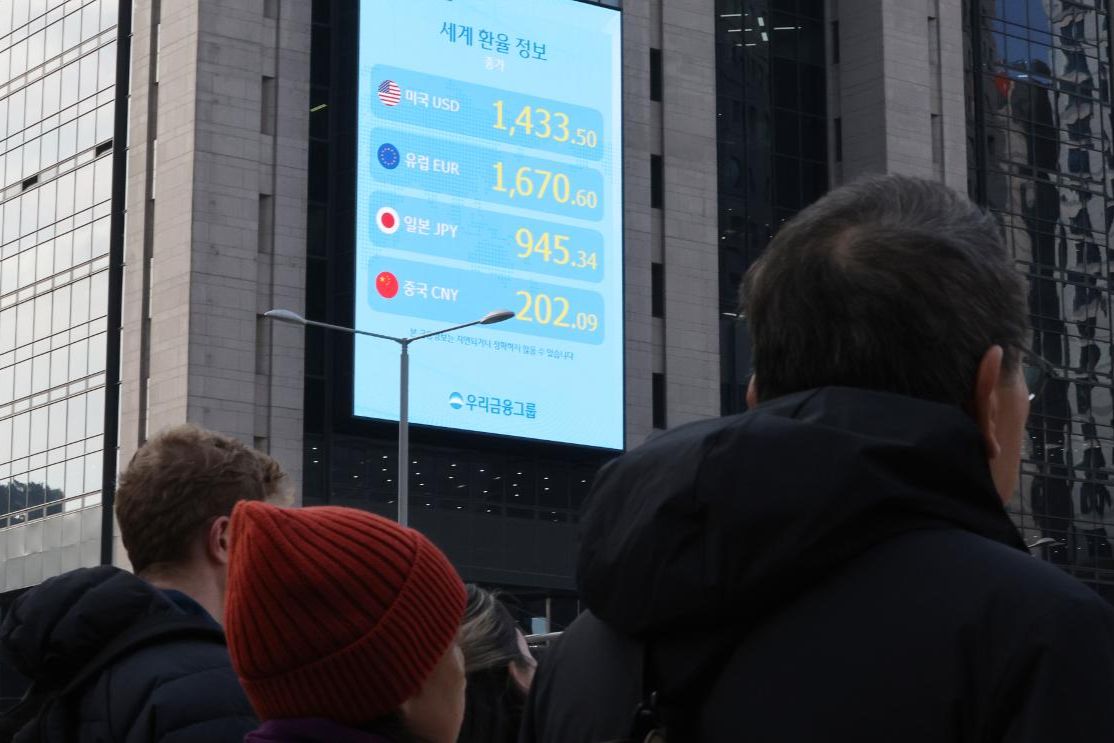A long-awaited tariff deal between Korea and the U.S. provided only brief support for the won, which continued to weaken amid persistent capital outflows and global currency pressures, analysts said Sunday.
Under the agreement reached Wednesday, the two nations will restructure a $350 billion trade and investment package — a condition for cutting blanket tariffs from 25 percent to 15 percent — into $200 billion in cash investments, capped at $20 billion annually, and $150 billion for shipbuilding cooperation.
The won briefly strengthened following the announcement but later reversed course, trading between 1,420 and 1,430 won per dollar and testing the upper bound of that range. The exchange rate broke the 1,400 level in late September, after hovering in the upper 1,300s through June, and has been climbing steadily since.
In the Seoul foreign exchange market on Friday, the won-dollar exchange rate closed at 1,424.4 won per dollar.
Despite a strong KOSPI, the won has remained elevated in recent weeks amid uncertainty over the scale and structure of Korea’s pledged investments in the U.S.
To mitigate the risk in the foreign exchange market, the government is expected to avoid direct market purchases, instead relying on sources such as interest income from the Bank of Korea’s foreign exchange reserves.
Still, the won failed to gain significant traction post-deal, weighed down by broader macro forces. The dollar remains strong on receding bets for further rate cuts by the U.S. Federal Reserve, while the yen’s weakness following the Bank of Japan’s decision to hold rates steady has increased the pressure on Asian currencies.
Korean investors’ overseas securities purchases, now roughly four times the scale of foreign inflows into the domestic market, are further intensifying outflow-driven depreciation.
“The recent rise in the won-dollar exchange rate from 1,400 to 1,420 was driven largely by concerns over U.S.-bound investments, while the further climb to 1,440 reflects the impact of Korean investors’ overseas activity outpacing foreign inflows into the KOSPI,” said Wee Jae-hyun, an economist at NH Futures.
“The exchange rate will need a correction in the supply-demand imbalance to fall back below the 1,400-won level,” Wee added.
Analysts also warn that the planned capital outflows themselves could hinder a sustained rebound in the local currency, even as the deal eases some domestic economic uncertainty.
“The outcome of the deal is seen as positive for both sides: Korea eased the burden of a sudden large-scale dollar outflow, while the U.S. secured the scale of investment it had been seeking,” said Choi Ye-chan, an analyst at Sangsangin Investment & Securities.
“Even if these outflows don’t pass through the foreign exchange spot market, a decline in foreign exchange reserves could lead to a credit rating downgrade, rising CDS (credit default swap) premiums and a potential outflow of foreign capital, all of which could indirectly add upward pressure on the exchange rate.”

